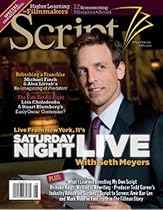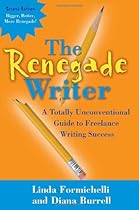According to BusinessDictionary.com, perks are "privileges granted to employees in addition to their salaries and benefits," and may include such things as "the company car, vacations, reserved parking spaces, spacious offices, private dining and washroom facilities, etc."
It's the "etc." that seems to be changing with the times.
Until recently, most discussions of perks focused on what high-tech companies in Silicon Valley were offering their employees: free gourmet meals, 24-hour gym, yoga classes, on-site nutritionist, massage therapy, concierge service, discounted artwork, auto detailing, even botox injections and bring-a-pet-to-work day. The idea was often two-fold: (a) make the company an attractive place to work, and (b) make it easy for employees to work long hours -- without worrying about leaving to eat, get to the dry cleaners or exercise. Yet the question arises: If the idea is to encourage employees to work harder, then are free meals really perks? As Steven E. Gross, a senior partner at Mercer Human Resource Consulting, notes, "some people would view that not as a perk, but as serfdom."
Clearly, perks are a tricky subject. As companies simultaneously try to shake off the recession, keep costs low, retain valued employees and recruit talented new ones, they need to understand what perks are and what perks are meant to do -- from their own perspective as well as that of their employees.
Perks are different from benefits, which many people consider to be an essential part of a compensation package that includes such things as health and dental coverage and some form of retirement account. Perks are more discretionary, and can be offered to individuals either as a way to entice them to join the company, or as a way to reward them as they move up the ranks.
Wharton management professor Iwan Barankay defines a perk as "what makes a job more enjoyable for an employee. It can be a nicer office, a hard-to-get parking space, a seat next to a window or a new computer. The essential thing is that this perk is scarce, and management has some discretion over how to allocate it." A perk is not offered across the board, Barankay says, although a company may highlight some of its perks when it is looking for new employees. Many perks are secret, given out during private one-on-one yearly reviews. Others are public, such as workplace awards or rankings. In economically healthy times, says Barankay, these awards "may have a bonus or promotion attached to them." In leaner times, it is just the honor.
Interviews with Wharton faculty and HR experts suggest that perks are especially valuable when they "give employees the chance to customize their own employment arrangement," says Wharton management professor Adam Grant. "Perks can help employees feel uniquely supported and valued by their employers. Think about an employment contract as a restaurant menu: An employer offers an employee a set of options he or she can choose from that are of similar cost to the employer.... We will probably be seeing a more concerted effort at this kind of mass customization in the future." Examples of options that give employees more autonomy over how their jobs are structured include the opportunity to telecommute one day a week or to negotiate degrees of scheduling flexibility.
According to Bill Driscoll, northeastern district president for staffing firm Robert Half International, "We now have four generations in the workforce" at the same time -- the Silent Generation (approximate ages: 66 to 85), the baby boomers (ages 47 to 65), Generation X (ages 30 to 46) and Generation Y (also known as millennials; under 30). Combine that with continual advancements in technology, and the choices people have for designing their jobs are increasing. "With a laptop, iPad or cellphone, you could truthfully be working from anywhere," he notes. In addition, technology fosters increasingly creative ways to offer training and education to employees at all levels.
Driscoll points to a Robert Half survey released in January which asked executives to identify perks they plan to offer, or already offer, in 2011. Subsidized training or education came in highest (33%) followed by flexible work hours/telecommuting (27%), mentoring programs (25%), matching gift programs for charitable contributions (15%), on-site perks such as childcare, dry cleaning, fitness centers and cafeterias (11%), subsidized transportation (10%), sabbaticals (8%) and housing or relocation assistance (7%).
As for the issue of generational diversity in today's workplace, Grant points to what he says is a surprising conclusion in a study that came out in March 2010 in the Journal of Management, namely that "the differences between the work values of different generations are very small." The study -- led by Jean M. Twenge, a professor at San Diego State University, and titled, "Generational Differences in Work Values: Leisure and Extrinsic Values Increasing, Social and Intrinsic Values Decreasing" -- "shows that if you rank values by generation, most members of each generation care about the same values in the same order," says Grant.
At a "fundamental level, people want the same things out of work; they just have different ideas about how to get there," Grant adds. At the top of that list are "intrinsic rewards," such as "the opportunity to do enjoyable work, experience personal development and growth, and feel a sense of accomplishment." Valued second highest are extrinsic rewards, "which include status and promotions, and altruistic activity," such as the opportunity to contribute to others and the community. Third on the list are friendships and leisure. "There are trends indicating that intrinsic and friendship values are decreasing, and leisure and extrinsic values are increasing," says Grant. "But overall, members of the baby boomer, Gen X and millennial generations are more similar than different in their work values."
He notes two caveats to Twenge's findings. First, "we know that many members of Gen Y are less willing to delay gratification and like more immediate rewards than their predecessors." Second, Gen Y scores slightly higher in terms of how important leisure time is to them, "which means that if I were interested in attracting Gen Y to my company, I would increase perks that help them carve out more time for their outside interests, such as flextime, or incorporate these interests into the work time, such as employer-sponsored volunteering."
Twenge's study offers a number of additional insights. For example, "contrary to popular press reports, Gen Y does not favor altruistic work values more than previous generations. And social values (e.g., making friends) and intrinsic values (e.g., an interesting, results--oriented job), were rated lower by Gen Y than by boomers," the study says. Twenge at one point also notes that "despite the emergence of a mini-industry built on the assumption of a changing workforce, empirical evidence for generational differences in work values is scant."
Low-cost, No-cost Perks
Given the recent recession and its sluggish recovery, companies are scrutinizing perks more closely than ever, reviewing every expense item and whittling down the perks that are especially costly. "Organizations are increasingly sensitive to a performance-based culture," says Fran Luisi, a principal of Charleston Partners, a Rumson, N.J., firm that focuses on executive recruitment. "They structure compensation to be very incentive-driven. The days of additional perks for perks' sake are disappearing." Gross agrees that employers today need to be as efficient and lean as possible, adding that perks like telecommuting and flexible hours "don't need to be seen as costs, but as different ways of looking at the workforce.... [In that sense], flexibility is not a perk; it's a quid pro quo."
Most experts agree that perks overall play an important role in the relationship between employee and company, especially in recessionary times. "Perks hold people to an organization," says John Challenger, CEO of Challenger, Gray & Christmas, a Chicago-based global outplacement firm. "If an employee likes his or her boss and the work is challenging, and if the company has a set of perks that are adapted to what that person needs, then it's hard for the employee to leave. He or she may not" be able to replicate that situation in another organization.
Bill Morin, founder of New York-based leadership consulting firm WJM Associates, suggests that perks can actually offer signposts to new employees, "because wherever the perk is placed -- whether on sales or profitability or new products -- that is where the company wants the employee to concentrate [his or her efforts]. Sometimes when individuals come on board, they don't know what the company is looking for. Perks help these individuals focus."
Companies these days are especially interested in offering low-cost or no-cost perks that increase employee engagement, adds Challenger. One way to do that is to survey employees to find out what they want, and then prioritize those needs. Scaling back perks without eliminating them is one approach. An example, Challenger says, is tuition reimbursement. "In good times, a company might not put restrictions on that perk, but in tough times, the company might say that the training has to be in line with the work an employee does, and [is covered] only if the employee earns a certain grade in the course. Or the company could scale back a rewards program; instead of sending top salespeople to Hawaii, perhaps send them to a place that is not so extravagant."
Driscoll cites working at home -- provided companies set productivity standards -- and mentoring as two cost-free perks that can be offered to employees who "share the company's values and strategy." He advises companies to avoid cutting perks in a recession "because perks are a way to retain their existing talent. Companies can offer subsidized training and education, mentoring or a flexible schedule, and can do that without having to offer more financial compensation, and in some cases, can offer less."
One of Gross's clients is an accounting firm whose young employees often choose to leave and go work for industry. "Why? Because there is more flexibility and the hours are more predictable," says Gross. It can also mean less compensation -- accounting and law firms, among others, have lucrative partner tracks for their top-performing employees -- but that is a tradeoff young people these days seem willing to make.
Firms should also be aware that perks can sometimes backfire. Companies which have used very elaborate perks as a recruiting device to attract talent away from competitors are finding that this approach "works too well," says Grant. "Employees come to the company and take the perks for granted, which results in feelings of entitlement and reduced gratitude, and can contribute to dissatisfaction and turnover." Companies face a similar dilemma trying to figure out "which perks should be offered up front to bring people in the door to provide a cohesive, supportive environment, versus which perks should be offered as rewards for good performance or for seniority down the road," says Grant. He advises increasing perks up front for firms that "are struggling with recruiting, whereas firms that recruit effectively, but face performance challenges, may want to increase performance-based goals."
He also suggests that companies focus on creating at least one perk that connects to core values but differentiates them from competitors. One example he cites is The Virgin Group, "which is offering employees the chance to engage in skills-based volunteering to help people in underprivileged communities and developing countries become successful entrepreneurs. Few other travel and media companies provide such meaningful opportunities for employees to share and hone their own entrepreneurial skills."
Given a seemingly endless array of perks to consider, choosing the most effective ones is related to how well a company understands its workforce, and how well employees "get" what the company is all about. Examples of effective perks, in light of the discussion above, are those offered by online shoe retailer Zappos, suggests Wharton management professor Nancy Rothbard. "One way to think about making perks worthwhile is to look at the culture of your company: What are the values, norms and behaviors that reflect its core identity? Then choose perks strategically around that."
In the case of Zappos, headquartered in Henderson, Nev., its approximately 1,500 employees tend to be young and "driven by a culture of fun," as suggested by the presence of "beach balls in the office, very casual dress and frequent parties," says Rothbard, adding that these perks are "designed to keep employees engaged and passionate" about their work. In addition, Zappos -- despite its occasionally goofy videos -- is serious about training its employees, going so far as to offer people $2,000 in cash to leave the company if they feel it won't be a good fit for them. One of their other perks is a full-time life coach. Companies obviously view such perks as a competitive advantage, attracting talent that wants to be associated with an exciting company, Rothbard notes.
Corporate Jets, Country Clubs
Up until the time of the accounting scandals and the Sarbanes-Oxley Act in 2002, perks for executives existed in rarified -- and non-turbulent -- air. They were status symbols that CEOs came to expect once they had reached the top, says Wharton accounting professor Wayne Guay, and they ranged from corporate jets to country club memberships to $500,000 office renovations.
Several years ago, corporate governance watchdogs and the media started paying attention to these perks, which then came to be seen as "very conspicuous consumption and not very good investor relations," says Guay, adding that one of the main arguments for them was their tax treatment. If a company could argue that country club membership was an important business expense because the CEO did deals while playing golf, then the company could write off that amount on its taxes.
If you move away from the tax issues, "then it's hard to come up with another good reason for offering these perks to senior executives," says Guay. "Why not just give an executive a certain amount of money and let him or her use it how he wants? Many firms are doing that now. The conspicuous perks that were big 15 years ago are gone. And these days, everything needs to be disclosed, including in the proxy statement, where corporate governance groups can see it."
Guay agrees with that approach. "You pay the executive a going rate depending on the company and the position, and if the executive likes to spend lavishly, he can do that on his own time.... If a CEO did not get perks, he would, other things being equal, get paid more. The two are negotiated simultaneously."
As for examples of perks for mid-level or lower-level employees, Guay suggests a positive and a negative one. On the positive side, if a company can negotiate lower health club membership fees for a group of employees, then everybody wins: The employees get a cost break, and the company gets healthier employees. The example of a negative perk, he says, goes back a few years to when companies were offering retirement benefit plans to employees that gave them a choice between buying into a mutual fund or buying company stock at a small discount. Because many of the lower level employees were not financially sophisticated, they typically bought the company stock because it was more familiar to them. The employees' decision was, of course, a boon for the company, which used this employee "perk" to raise more capital.
Yet "any investment professional would tell you that if all your capital is tied up in company stock, the last thing you need is more of it," says Guay. After the dot-com blowup, employees at a number of companies that went bankrupt ended up losing not only their jobs, but all their retirement money.
Regardless of how perks are perceived by either the employer or the employee, if a company decides it has no choice but to cut back on perks, the best strategy is to bring employees in on the process. Employees then feel like they have helped shape the decision. "We know from 30 years of research that when you have to deliver bad news to employees, they are more comfortable accepting a negative outcome if they felt it was determined by a fair process," says Grant. One of the most creative approaches he has seen in these cases is the use of innovation tournaments. Employees compete to come up with suggestions on how to reduce perks in ways that meet the company's objective but leave in place those perks that they consider especially meaningful. The tournaments, Grant says, "are a way to foster transparency and democracy."
Thanks to Knowledge@Wharton
http://knowledge.wharton.upenn.edu/article.cfm?articleid=2800
===================
 This post was inspired by Charlie Gilkey’s recent (genius) post “
This post was inspired by Charlie Gilkey’s recent (genius) post “




